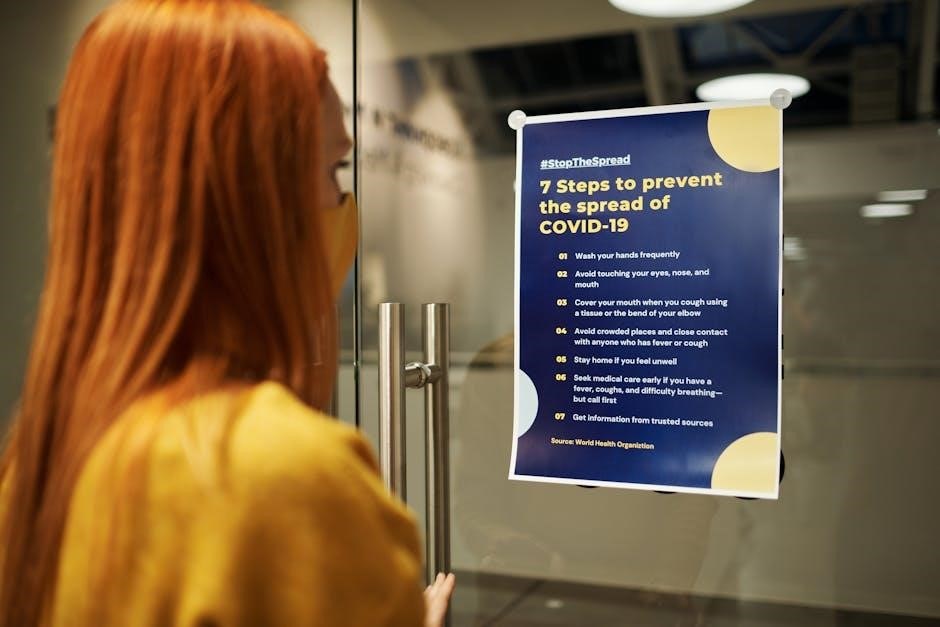the woman who runs with wolves pdf

Overview of “Women Who Run With the Wolves”
Clarissa Pinkola Estés’s 1992 book, Women Who Run With the Wolves, explores the wild woman archetype through myths and stories. It became a New York Times bestseller, remaining so for 145 weeks.
Women Who Run With the Wolves: Myths and Stories of the Wild Woman Archetype, penned by American psychoanalyst Clarissa Pinkola Estés, was published in 1992. The book became a phenomenon, gracing The New York Times Best Seller list for an impressive 145 weeks, setting a record at the time. Estés, with her deep understanding of the feminine psyche, draws upon multicultural myths, fairy tales, and folk stories gathered over two decades of research. The book’s success lies in its ability to help women reconnect with their healthy, instinctual selves, embracing the visionary attributes inherent in the Wild Woman archetype, a concept Estés brilliantly articulates. Her work underlines the importance of spirituality, instinct and self-connection.
Key Themes and Archetypes Explored
Women Who Run With the Wolves delves into key themes such as female intuition, instinctual nature, and the reclaiming of feminine power. The book explores various archetypes, with the “Wild Woman” archetype at its core, representing the untamed, instinctual essence of women. It emphasizes the importance of reconnecting with this inner wildness, encouraging women to embrace their authentic selves, liberated from societal constraints. The book also touches upon themes of creativity, passion, and the ageless knowing that resides within every woman. It examines myths and stories as vehicles for understanding the feminine psyche, revealing the symbolic meanings embedded within these narratives. These stories help women understand their relationship with the world, underlining their need for spirituality.
Clarissa Pinkola Estés, an American psychoanalyst and poet, draws upon her ethno-clinical background and studies of wolves to inform her exploration of the feminine psyche and the wild woman archetype.
Estés’ Background and Influences
Clarissa Pinkola Estés’s work is deeply rooted in her unique background as a Jungian psychoanalyst, poet, and cantadora (storyteller). Her ethno-clinical psychology studies, combined with her understanding of group and tribal dynamics, significantly shape her perspective. Estés draws profound inspiration from her research on wolves, observing parallels between their social structures and the female experience. Her work highlights the inherent relational nature, resilience, and intuitive capabilities shared by both wolves and women.
Furthermore, her upbringing within a family of storytellers provided a rich tapestry of myths and folktales that she weaves into her psychological insights. This blend of scientific observation, cultural narratives, and personal experiences forms the bedrock of her exploration into the wild woman archetype and its significance for contemporary women seeking connection with their instinctual selves. These influences culminate in a unique and powerful approach to understanding the female psyche.

Clarissa Pinkola Estés and Her Work
The Wild Woman Archetype Defined
The “Wild Woman” archetype, as defined by Clarissa Pinkola Estés, embodies the instinctual nature of women, representing a powerful and creative force within every woman. This archetype is characterized by keen sensing, a playful spirit, and a deep capacity for devotion. She is relational, inquisitive, and possesses great endurance and strength. The Wild Woman is also deeply intuitive, intensely concerned with her young, her mates, and her pack.
Estés portrays the Wild Woman as an endangered species in modern society, where women are often pressured to conform to societal expectations and suppress their innate instincts. By reconnecting with this archetype, women can reclaim their authentic selves, embrace their creativity, and tap into their inherent wisdom. This reconnection involves embracing the natural cycles of life, trusting one’s intuition, and cultivating a strong sense of self.

Myths and Stories as Tools for Understanding
Myths and folk tales mirror the feminine psyche, conveying deep symbolic meanings, as Estés reveals. These narratives help women reconnect with their instinctual nature and understand themselves.
The Significance of Myths and Folk Tales
In “Women Who Run With the Wolves,” Clarissa Pinkola Estés emphasizes that myths and folk tales serve as invaluable tools for understanding the feminine psyche. These narratives, drawn from diverse cultures, act as mirrors reflecting the inner landscape of women, revealing their deepest fears, desires, and strengths. Estés argues that these stories are not mere entertainment but contain ancient wisdom passed down through generations, offering insights into the instinctual nature of women.
By exploring these myths, women can reconnect with their wild, untamed selves, reclaiming their power and intuition. The stories provide a framework for understanding the archetypes that shape female identity, allowing women to navigate their lives with greater awareness and purpose. Estés encourages readers to delve into these narratives, extracting the symbolic meanings and applying them to their own experiences, fostering a deeper connection with their inner selves and the collective wisdom of women throughout history.
Examples of Stories Used in the Book
“Women Who Run With the Wolves” incorporates numerous myths and folk tales to illustrate key concepts related to the wild woman archetype. One example is the tale of “Bluebeard,” which explores the dangers of naivety and the importance of trusting one’s intuition. Another story, potentially drawn from Estés’s own heritage, delves into cultural narratives that highlight female strength and resilience.
The book also utilizes fairy tales like “Little Red Riding Hood,” reinterpreting them to focus on the young girl’s journey of self-discovery and her encounter with the wild within. These stories are carefully chosen to resonate with women from diverse backgrounds, offering insights into universal themes of love, loss, betrayal, and empowerment. By analyzing these narratives, Estés helps readers uncover the hidden meanings and apply them to their own lives, fostering a deeper understanding of their inner selves.
Estés encourages women to reconnect with their instinctual nature, represented by the Wild Woman archetype. She emphasizes embracing intuition, keen sensing, and a playful spirit as vital components of female empowerment.
Reconnecting with Instinctual Nature
The book emphasizes the importance of women reconnecting with their inherent, instinctual selves. Estés uses the “Wild Woman” archetype to represent this untamed, intuitive nature. She argues that modern society often suppresses these instincts, leading to feelings of disconnection and disempowerment.
Reconnecting involves embracing traits like keen sensing, a playful spirit, and heightened intuition. By understanding and nurturing these qualities, women can reclaim their authentic selves and live more fulfilling lives. Estés believes that rediscovering this wildness is essential for psychological well-being and personal growth, allowing women to tap into their inner strength and wisdom. This reconnection fosters resilience, creativity, and a deeper understanding of one’s own needs and desires, ultimately leading to a more balanced and authentic existence.

The “Wild Woman” and Female Instinct
Characteristics of the Wild Woman
The “Wild Woman” archetype, as portrayed by Estés, embodies several key characteristics. She is deeply intuitive, possessing a keen sense of observation and an ability to perceive hidden truths. This woman is relational by nature, valuing connection and community. She is also fiercely independent, refusing to conform to societal expectations that stifle her spirit.
Strength and endurance are hallmarks of her character, enabling her to overcome challenges with resilience. The Wild Woman has a playful spirit, embracing joy and creativity as essential aspects of life. She is intensely devoted to those she cares for, protecting and nurturing her “pack”. Furthermore, she is connected to her instincts, trusting her inner voice and embracing her authentic self without apology, thus fostering a life of passion and purpose.
Women Who Run With the Wolves achieved significant success, spending 145 weeks on The New York Times Best Seller list. This made it a record-breaking success for a book of its kind.
“The New York Times” Bestseller Status
Clarissa Pinkola Estés’s “Women Who Run With the Wolves” secured a remarkable position on The New York Times Best Seller list, maintaining its presence for an impressive 145 weeks. This achievement, attained over a three-year period, marked a record at that time, highlighting the book’s profound impact and widespread appeal. The book’s extended stay on the list is a testament to its enduring relevance and the deep connection it forged with readers seeking to understand and embrace the “Wild Woman” archetype. The book’s success underscores the hunger for narratives that empower women, explore their inner landscapes, and celebrate their instinctual nature. This bestseller status significantly amplified Estés’s voice and message, furthering her influence on feminist thought and psychological understanding of women.
Impact and Reception of the Book
Critical Reception and Awards
“Women Who Run With the Wolves” garnered significant critical attention, sparking both praise and debate within literary and psychological circles. The book’s unique approach, blending mythology, psychology, and feminist perspectives, resonated with many readers while also facing scrutiny from some academics. Estés’s work was lauded for its accessible style and its ability to connect with a broad audience, offering a new lexicon for understanding the female psyche. The book’s exploration of the “Wild Woman” archetype was seen as empowering and insightful, encouraging women to embrace their instinctual nature. The book also was recognized with the ‘Las Primeras Award’ from the Mexican American Women’s Foundation. Despite mixed reviews, its lasting impact on popular culture and feminist discourse is undeniable.

Accessing the Book in PDF Format
Finding a legitimate PDF of “Women Who Run With the Wolves” involves checking reputable online bookstores or library digital collections. Ensure compliance with copyright laws when accessing digital copies.
Legitimate Sources for Downloading the PDF
To access a legitimate PDF version of “Women Who Run With the Wolves,” explore reputable online platforms. Start by visiting the websites of well-known bookstores and publishers, such as Amazon or Ballantine Books, to see if they offer a digital edition for purchase. Also, check with your local library or online library systems like the New York Public Library’s digital collection, which may provide access to the book in PDF format through their borrowing services.
Always ensure that you are downloading from a trusted source to avoid copyright infringement and potential security risks. Verify the legitimacy of the website and confirm that they have the rights to distribute the book in digital form. Remember to respect copyright laws and support the author by obtaining the PDF through legal channels. This ensures that you are accessing a safe and authorized version of the book.
Considerations Regarding Copyright and Piracy
When seeking a PDF of “Women Who Run With the Wolves,” it’s vital to consider copyright laws and the implications of piracy. Copyright protects the author’s intellectual property, granting them exclusive rights to distribute their work. Downloading the book from unauthorized sources constitutes piracy, which is illegal and unethical.
Pirated PDFs often lack quality and may contain malware or viruses, posing risks to your device and personal information. Supporting legitimate sources ensures that authors and publishers are fairly compensated for their efforts. By purchasing the PDF from authorized vendors or borrowing it from a library, you contribute to the sustainability of the publishing industry. Respecting copyright fosters creativity and allows authors to continue producing valuable content. Always opt for legal channels to access the book and avoid the risks associated with piracy.